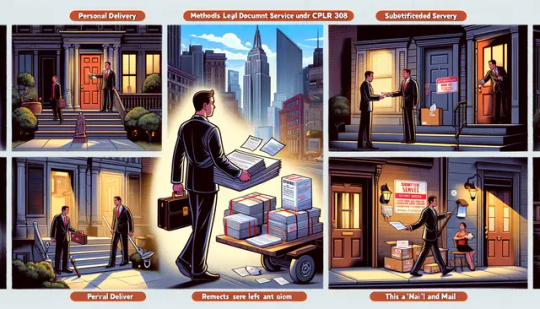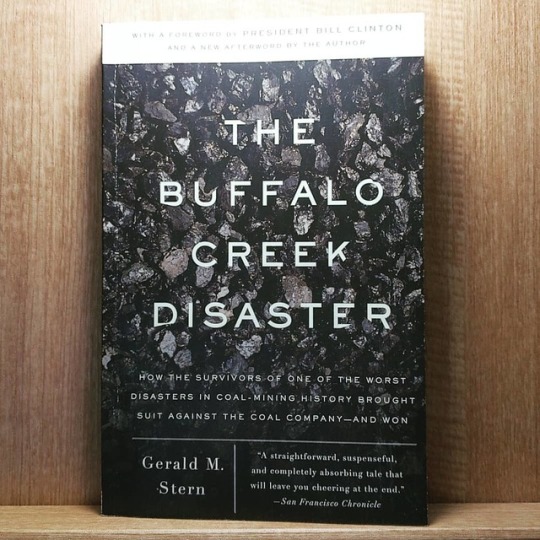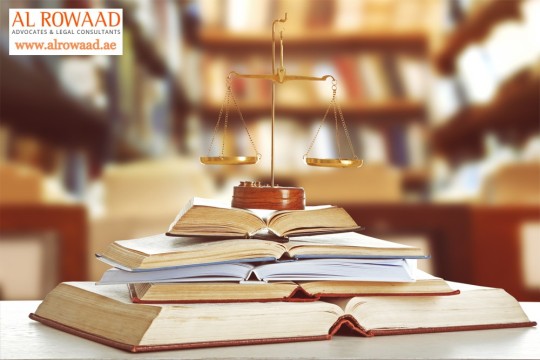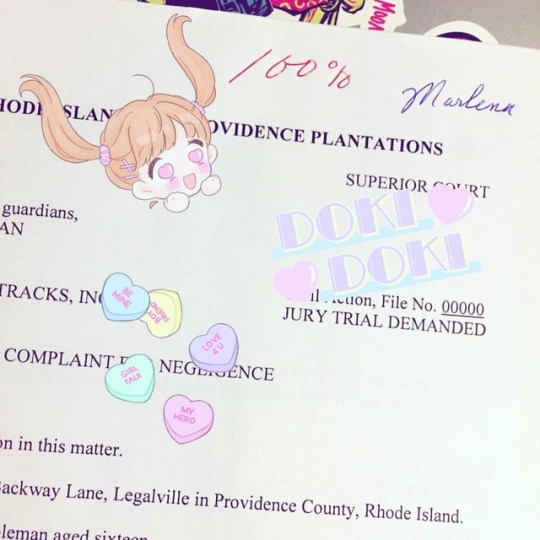#CivilProcedure
Explore tagged Tumblr posts
Text
Understanding an Example Motion to Dismiss: A Legal Insight by Duality Law
Explore an example motion to dismiss with detailed legal context and practical application, presented by Duality Law. Learn how this procedural tool works in civil litigation, its grounds, and how it can strategically shape a case's direction. This guide breaks down the components, legal justifications, and real-case references to help you understand how a motion to dismiss is drafted and argued in court. Whether you're a law student, paralegal, or someone navigating the legal system, this information offers clarity and relevance without promoting legal services. #LegalEducation #MotionToDismiss #ExampleMotionToDismiss #CivilProcedure #LegalInsight #DualityLaw #LawBlog #LegalResources #JusticeExplained #LegalWriting
0 notes
Text

Navigating New York's service of process laws can be complex, but understanding CPLR 308 is crucial for successful legal proceedings. #ServiceOfProcess #CPLR308 #NewYorkLaw #LegalProceedings
Our expert team at Undisputed Legal has extensive experience in leveraging CPLR 308 to ensure efficient and compliant service of process for our clients. #ProcessServing #LegalCompliance #LegalServices #ProcessServer #UndisputedLegal
Discover how our in-depth knowledge of this statute can help you streamline your case and achieve optimal outcomes by visiting our informative article at https://undisputedlegal.com/how-cplr-308-enhances-service-of-process-in-new-york/. #CourtDocuments #LegalSystem #LawFirm #AttorneyAssistance #LegalResearch #DueDiligence #LegalWriting #Litigation #CivilProcedure #LegalUpdates #LawyersOfInstagram #LegalTips #LegalAdvice #NewYorkAttorney #NewYorkCourts #ServiceIndustry
0 notes
Photo

My next book of the year. This one is a required reading for my Civil Procedure class. . . . . . . . . . #buffalocreekdisaster #requiredreading #bookstagram #bookgram #book #read #reading #readingchallenge #booksofig #summerreading #summer #summer2019 #summer19 #law #lawstudent #lawschool #civpro #civilprocedure #class #classreading #0l #1l #school (at Revere, Massachusetts) https://www.instagram.com/p/B0hMTqblgAY/?igshid=19wpxg0sarjqa
#buffalocreekdisaster#requiredreading#bookstagram#bookgram#book#read#reading#readingchallenge#booksofig#summerreading#summer#summer2019#summer19#law#lawstudent#lawschool#civpro#civilprocedure#class#classreading#0l#1l#school
2 notes
·
View notes
Photo

Learn about Substantive Claims in UAE Civil Procedures
Looking for reliable information on substantive claims in UAE civil procedures? Look no further than Al Rowaad Advocates' legal blog. Our expert legal team shares valuable insights and analysis on a range of legal topics, including substantive claims in civil proceedings. Visit our website https://www.alrowaad.ae/legal-blog/substantive-claims-for-the-civil-procedures-in-the-uae/ now to read our latest blog post and better understand the UAE's civil procedures. Trust Al Rowaad Advocates for all your legal needs.
#CivilProcedures#CivilProceduresUAE#SubstantiveClaims#DisputeResolution#UAECivilLaw#CivilLawyerInUAE#CivilLawyerInDubai#CivilLawyerInAbuDhabi
0 notes
Text
Multitasking-Studying Bar Subjects-Civil Procedure
Civil Procedure, Prof. Watching playlist on Erie Doctrine. https://www.youtube.com/watch?v=_S0zAfwWZ_A&list=PLgUkKxwt2Xsau6rkY6gH5h6sEF1JM51PO
0 notes
Photo

“...a defendant’s awareness that the stream of commerce may or will sweep the product into the forum State does not convert the mere act of placing the product into the stream into an act purposefully directed toward the forum State.” - Justice O’Connor from Part II-A of the opinion from Asahi Metal Industry Co., Ltd. v. Superior Court of California (Cheng Shin, Real Party in Interest), 480 U.S. 102 (1987). . . . I’d rAther post this selfie than finish reading this god forsaken case. Oh, and #spoileralert the court had no jurisdiction. #SupremeCourtcases #civilprocedure #1L #sobored #stilltho #glitteraf
0 notes
Photo

i'm feeling this. #criminallaw #civilprocedure #homework #hellyeah #lawstudent
0 notes
Text
The Discovery Phase in Legal Procedure: Purpose, Principles, Limitations
The Rules Regarding Discovery in Law Purpose and Principles of Discovery1. Promoting Fairness 2. Encouraging Settlement 3. Narrowing the Issues in Dispute 4. Ensuring Judicial Efficiency Key Principles Governing Discovery Types of Discovery 1. InterrogatoriesCharacteristics of Interrogatories Advantages and Limitations 2. DepositionsCharacteristics of Depositions Advantages and Limitations 3. Requests for ProductionCharacteristics of Requests for Production Advantages and Limitations 4. Requests for AdmissionCharacteristics of Requests for Admission Advantages and Limitations 5. SubpoenasTypes of Subpoenas Examples of Common Subpoena Uses Advantages and Limitations Limitations and Protections in Discovery 1. Attorney-Client PrivilegeKey Aspects of Attorney-Client Privilege Implications in Discovery 2. Work Product DoctrineKey Aspects of the Work Product Doctrine Implications in Discovery 3. Relevance and Proportionality LimitationsRelevance in Discovery Proportionality in Discovery Implications in Discovery 4. Privacy and Confidentiality ProtectionsProtective Orders Privacy Considerations in E-Discovery Implications in Discovery The Rules Regarding Discovery in Law Discovery is a crucial phase in legal proceedings that allows parties to obtain relevant information before trial. It is designed to ensure fairness, prevent surprises, and facilitate settlement discussions. The discovery process varies by jurisdiction, but common rules govern its scope, methods, and limitations. This essay explores the fundamental principles of discovery in law, the different types of discovery tools, and the legal and ethical considerations involved.

Purpose and Principles of Discovery The discovery process is an essential component of legal proceedings, designed to ensure fairness, transparency, and efficiency in resolving disputes. By requiring parties to exchange relevant information before trial, discovery promotes informed decision-making, prevents undue surprises, and narrows the issues in contention. This section explores the primary purposes of discovery and the key principles that govern its implementation. 1. Promoting Fairness One of the fundamental objectives of discovery is to prevent any party from gaining an unfair advantage through the withholding of critical evidence. In adversarial legal systems, each side must have access to the facts necessary to present their case effectively. Without discovery, a stronger party—whether due to financial resources, institutional power, or mere access to information—could suppress vital evidence, misleading the court and disadvantaging the opposing side. Fairness in discovery manifests in several ways: - Equal Access to Information – Both plaintiffs and defendants have the right to obtain relevant evidence, ensuring a level playing field. - Prevention of Trial by Ambush – Discovery prevents one party from surprising the other with new evidence at trial, which could undermine the opposing side’s ability to prepare a proper defense or argument. - Protection Against Misrepresentation – Parties are required to disclose material facts, preventing fraudulent or misleading claims based on withheld information. To reinforce fairness, courts impose sanctions on parties who fail to comply with discovery obligations, such as suppressing evidence or engaging in obstructionist tactics. In extreme cases, failure to comply can result in case dismissal or adverse judgments. 2. Encouraging Settlement Discovery serves a crucial role in promoting the settlement of disputes outside the courtroom. Litigation is costly, time-consuming, and uncertain, making early resolution a preferable outcome in many cases. By revealing the strengths and weaknesses of each party’s case, discovery allows for informed negotiations, reducing the likelihood of prolonged litigation. Settlement is encouraged in several ways: - Clarification of Case Strength – Parties often adjust their expectations once they review the available evidence, making them more willing to negotiate a fair settlement. - Cost-Benefit Analysis – If discovery reveals that continuing litigation would be more expensive or risky than settling, parties may opt for an early resolution. - Judicial Mediation – Courts may intervene, using discovery findings to facilitate alternative dispute resolution mechanisms, such as mediation or arbitration. Many legal systems actively encourage settlements as a means of reducing court backlogs and promoting efficient dispute resolution. Discovery plays a pivotal role in this by ensuring that both sides make decisions based on concrete evidence rather than speculation. 3. Narrowing the Issues in Dispute By clarifying the facts and legal questions involved in a case, discovery helps streamline litigation by narrowing the issues in contention. This prevents trials from becoming overly complex and time-consuming. Key ways in which discovery narrows issues include: - Eliminating Baseless Claims – If a party’s claims lack evidentiary support, they may be dropped before trial. - Focusing on Key Legal Questions – Discovery helps distinguish between disputed and undisputed facts, allowing courts to concentrate on the true points of contention. - Facilitating Pretrial Motions – With access to relevant evidence, parties can file motions to dismiss weak claims or seek summary judgment, potentially resolving the case without a full trial. By clarifying what is at stake, discovery ensures that trials are more efficient and that judicial resources are used effectively. 4. Ensuring Judicial Efficiency The discovery process significantly enhances judicial efficiency by preventing unnecessary delays and procedural complications at trial. Courts benefit from well-prepared cases, reducing the need for prolonged litigation and ensuring that trials proceed smoothly. Discovery contributes to judicial efficiency by: - Resolving Evidentiary Disputes in Advance – By addressing disputes over evidence before trial, discovery prevents unnecessary interruptions during courtroom proceedings. - Reducing the Need for Trial – In many cases, the information exchanged during discovery leads to settlements or summary judgments, eliminating the need for a full trial. - Providing Judges with Clearer Cases – With well-documented facts and defined legal arguments, judges can make more informed decisions without unnecessary speculation. Modern legal systems emphasize efficiency, and discovery rules are structured to balance comprehensive fact-finding with the need to avoid excessive or unnecessary delays. Key Principles Governing Discovery To ensure that discovery achieves its objectives while avoiding abuse, legal systems impose several guiding principles: - Relevance – Parties must disclose evidence that is relevant to the case. Irrelevant or marginally useful information can be excluded to prevent unnecessary burdens on the opposing party. - Proportionality – Discovery requests should be reasonable in scope. Courts may limit overly broad or intrusive discovery demands that impose excessive costs or burdens. - Good Faith – Parties are expected to engage in discovery honestly, avoiding obstructionist tactics, delays, or attempts to manipulate the process. - Judicial Oversight – Courts have the authority to regulate discovery, ensuring compliance with legal standards and addressing disputes over disclosure obligations. By adhering to these principles, discovery remains an effective tool for ensuring justice while maintaining efficiency and fairness in legal proceedings. The discovery process is an indispensable part of modern legal systems, serving multiple essential functions. It ensures fairness by granting equal access to information, encourages settlements by revealing case strengths and weaknesses, narrows the issues to be litigated, and enhances judicial efficiency. Governed by principles of relevance, proportionality, and good faith, discovery strikes a balance between comprehensive fact-finding and practical limitations. By structuring discovery effectively, courts and legal practitioners contribute to a more transparent, just, and efficient litigation system. Types of Discovery Discovery is a structured process that allows parties in a legal dispute to obtain relevant information before trial. To ensure fairness and efficiency, legal systems provide several discovery tools, each serving a specific purpose. These tools help parties gather evidence, clarify claims and defenses, and narrow the issues to be resolved at trial. The primary discovery mechanisms include interrogatories, depositions, requests for production, requests for admission, and subpoenas. 1. Interrogatories Interrogatories are written questions that one party sends to another, requiring written responses under oath. These questions are designed to elicit factual information, clarify claims, and identify key witnesses or evidence. Characteristics of Interrogatories - Typically, a party is given a specific number of interrogatories they can submit (e.g., the Federal Rules of Civil Procedure in the U.S. limit interrogatories to 25 unless otherwise permitted by the court). - Responses must be given in writing and under oath, ensuring accountability. - Questions are often broad and factual, such as: - "State the names and addresses of all individuals who witnessed the accident." - "Describe the contractual obligations between Party A and Party B." Advantages and Limitations ✅ Cost-Effective – Interrogatories are a relatively inexpensive way to obtain key facts. ✅ Useful for Foundational Information – They help establish background details, dates, and involved parties. ❌ Lack of Spontaneity – Because responses are written, they do not allow for immediate follow-up questions like depositions. ❌ Risk of Evasive Answers – Parties may provide vague or overly broad answers, requiring follow-up discovery tools. 2. Depositions A deposition is an oral testimony taken under oath before trial, with attorneys from both sides present. Depositions are usually recorded (via transcript or video) and can later be used as evidence in court. Characteristics of Depositions - Conducted outside of court, often in a law office or conference room. - The deponent (the person being questioned) must answer orally under oath. - Attorneys from both parties have the opportunity to ask questions and cross-examine the witness. - Depositions can last several hours or even days, depending on the complexity of the case. Advantages and Limitations ✅ Assessing Witness Credibility – Depositions allow attorneys to observe demeanor, tone, and consistency, which is crucial in evaluating how a witness might perform at trial. ✅ Preserving Testimony – If a witness becomes unavailable later (e.g., due to illness or death), deposition testimony can be used in court. ✅ Allows Immediate Follow-Up – Unlike interrogatories, depositions permit real-time questioning and clarification. ❌ Expensive and Time-Consuming – Depositions require attorneys, court reporters, and often travel expenses. ❌ Can Be Emotionally Intense – Witnesses are subject to direct and aggressive questioning, which may be stressful. 3. Requests for Production A request for production (RFP) is a formal request for documents, electronically stored information (ESI), and tangible evidence. These requests are crucial in modern litigation, particularly in complex cases involving corporate records, financial documents, or forensic data. Characteristics of Requests for Production - Requests can include emails, contracts, medical records, bank statements, photographs, and internal corporate reports. - Electronic discovery (e-discovery) has become increasingly important, covering digital data such as metadata, text messages, and surveillance footage. - The responding party must either provide the requested materials or formally object if the request is overly broad, irrelevant, or privileged. Advantages and Limitations ✅ Access to Crucial Evidence – Documents and digital records often serve as key evidence in proving claims or defenses. ✅ Modern E-Discovery Tools – Advanced software can sift through vast amounts of digital data efficiently. ❌ High Costs and Logistical Challenges – Large-scale document requests can be time-consuming and expensive to process. ❌ Risk of Spoliation – If a party destroys or alters relevant documents (whether intentionally or accidentally), they may face legal sanctions. 4. Requests for Admission A request for admission asks a party to admit or deny specific factual statements under oath. This tool is used to simplify litigation by eliminating disputes over uncontested facts. Characteristics of Requests for Admission - Each request is a statement, not a question, requiring the recipient to either admit or deny it. - Common examples include: - "Admit that you were present at the scene of the accident on January 5, 2023." - "Admit that Exhibit A is an authentic copy of the employment contract." - If a party fails to respond within the required time frame, the statements may be deemed admitted by default. Advantages and Limitations ✅ Streamlines Legal Issues – Helps clarify facts so trials can focus on genuine disputes. ✅ Encourages Honesty – If a party admits to a fact, it becomes part of the record and cannot later be contested. ❌ Limited Scope – Only useful for clearly defined factual statements, not for obtaining open-ended information. 5. Subpoenas A subpoena is a court order compelling a non-party to provide documents or testimony. Unlike other discovery tools, subpoenas are used to obtain evidence from individuals or organizations not directly involved in the lawsuit (such as banks, hospitals, or government agencies). Types of Subpoenas - Subpoena Duces Tecum – Requires a person or organization to produce documents, records, or tangible evidence. - Subpoena Ad Testificandum – Requires a person to testify in court or at a deposition. Examples of Common Subpoena Uses - A hospital may be subpoenaed to provide medical records in a personal injury case. - A bank may be required to produce financial statements in a fraud investigation. - A company executive may be compelled to testify about internal policies in a corporate lawsuit. Advantages and Limitations ✅ Access to Crucial Third-Party Evidence – Helps obtain information that a party might not voluntarily provide. ✅ Legally Binding – Non-compliance can result in contempt of court charges. ❌ Potential for Resistance – Third parties may object or request protective orders to limit the scope of the subpoena. Discovery is a multifaceted process that ensures transparency and fairness in legal proceedings. The various discovery tools—interrogatories, depositions, requests for production, requests for admission, and subpoenas—each serve a distinct purpose in gathering information, clarifying disputes, and preparing cases for trial. By strategically utilizing these mechanisms, attorneys can build strong legal arguments, negotiate settlements, and streamline judicial proceedings. However, discovery must be conducted in good faith, respecting legal limitations and privacy protections to maintain the integrity of the legal process. Limitations and Protections in Discovery While discovery is designed to promote fairness and transparency in legal proceedings, it is not without limits. Unchecked discovery could lead to invasions of privacy, excessive litigation costs, or the unfair exposure of sensitive information. To balance these concerns, legal systems impose several protections to ensure that discovery remains fair, reasonable, and aligned with principles of justice. These protections include attorney-client privilege, the work product doctrine, relevance and proportionality limitations, and privacy safeguards. 1. Attorney-Client Privilege Attorney-client privilege is one of the most fundamental legal protections in discovery. It ensures that confidential communications between a lawyer and their client remain protected from disclosure. This privilege encourages open and honest communication, allowing clients to seek legal advice without fear that their statements will later be used against them. Key Aspects of Attorney-Client Privilege - The privilege applies to communications (oral, written, or electronic) made between an attorney and their client. - The purpose of the communication must be to seek or provide legal advice. - The privilege belongs to the client, meaning only the client can waive it. - It does not protect communications made in furtherance of a crime or fraud (the crime-fraud exception). Implications in Discovery ✅ Privileged materials cannot be requested in discovery unless the client waives privilege. ✅ If privileged documents are accidentally disclosed, courts may use clawback agreements to return or exclude them from evidence. ❌ Privilege does not extend to third-party communications, meaning if a third party (not essential to the legal advice) is included in the conversation, privilege may be waived. 2. Read the full article
0 notes
Text
ABAJournal
#11thCir rages against "incomprehensible" shotgun complaint by #Alabama lawyer. #trials #litigation #civilprocedure https://t.co/DhbGTv62lw via @ABAJournal pic.twitter.com/XYxcyrqUAN
— ABA Journal (@ABAJournal) August 13, 2018
via Blogger https://ift.tt/2KOhqLq https://ift.tt/20qd6Z0
0 notes
Photo

During my 1L year at @regentlawschool , my civilprocedure professor, James Duane, said this and it has stayed with me ever since. 📍His point was that #lawyers are trusted with life’s problems from people. Clients trust us with retainer monies and we oftentimes work on the #billablehour. We are really the only ones who know if our time is honest. As officers of the Court, we are trusted to never lie to the bench or to opposing counsel. If we cannot be trusted with the little things then how can we be trusted with the big things??📌But this quote applies to so much more than the practice of #law. It too applies to other aspects of life including relationships. 📌 As a #divorce #attorney, each week I am confronted with issues of infidelity and deceit (from both men and women). I certainly haven’t been immune to these issues in my own personal life either. 📌I found out this week that someone close to me had been dishonest about some big things. And it sucks. 📌 But all we can do is accept the reality for whatever it is and keep going. It pains me to see women (and men) who are going through their own pains from broken relationships let it take them down. It’s the time to find your strength. 📌 And whatever you do, don’t let it harm your ability to open your heart to love again, trust again or your ability to live a life with honesty and integrity. After all, that’s what really matters.🖤 #divorcemonth #iranoutofTs #letterboardwisdom (at Cari's Farm)
0 notes
Text
#CivilProcedure #Proportionality: A litigators survival guide!
#CivilProcedure #Proportionality: A litigators survival guide!
View On WordPress
0 notes
Link
Are you struggling to understand the substantive claims for civil procedures in the UAE? Look no further than Al Rowaad's legal blog. Our expert team breaks down the complexities of civil law, providing you with the knowledge you need to navigate legal processes with ease. Visit our website today to stay ahead of the game.
#civilprocedures#SubstantiveClaims#DisputeResolution#UAECivilLaw#CivilLawyerInUAE#CivilLawyerInDubai#CivilLawyerInAbuDhabi
0 notes
Photo

Sunday studying civil procedure. My exam is in a few days and I don't feel ready for it.
114 notes
·
View notes
Text
#CivilProcedure #Proportionality: A litigators survival guide!
#CivilProcedure #Proportionality: A litigators survival guide!

PROPORTIONALITY – A LITIGATOR’S SURVIVAL GUIDE V – A ROUND UP: 12 KEY POINTS TO TAKE YOU INTO OCTOBER (AND BEYOND) | October 1, 2017 · CIVIL LITIGATION BRIEF | gexall · in Access to justice, Avoiding negligence claims, Civil Procedure, Costs, Costs budgeting, ProportionalityThe issue of “proportionality” is central to contemporary litigation. However it is rarely examined in detail and rarely…
View On WordPress
0 notes
Text
ABAJournal
A #LongIsland lawyer takes issue with a judge who ordered a five-figure sanction for failing to provide proper notice of a hearing, calls it a "clear-cut judicial error." #civilprocedure https://t.co/hVtGNuNsPB via @ABAJournal. pic.twitter.com/8Rr2uuV5bl
— ABA Journal (@ABAJournal) March 14, 2018
via Blogger http://ift.tt/2pd4Cpi http://ift.tt/20qd6Z0
0 notes